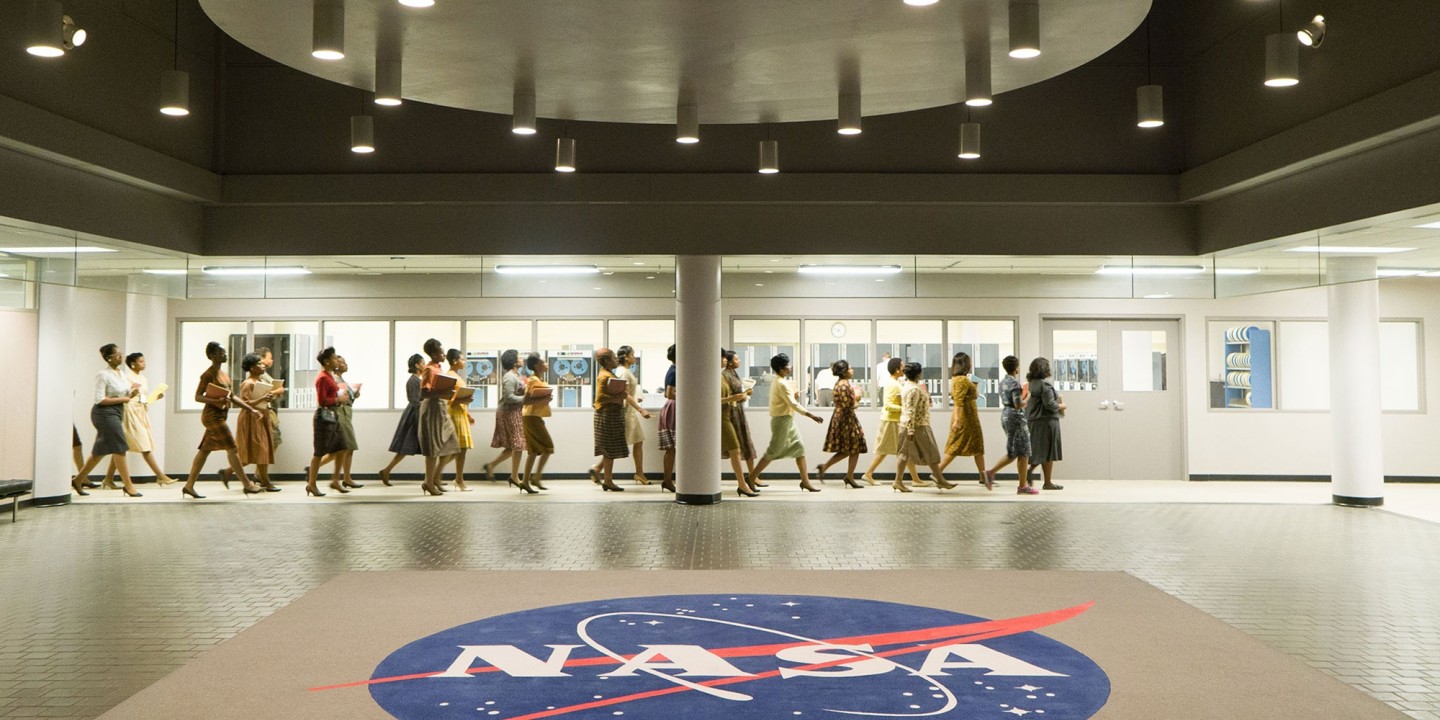A feel-good story's power and limits
There is a danger in responding to a film like Hidden Figures by congratulating ourselves on how far we’ve come.

On the third snow day in a row, when the streets were clear enough for everything but school buses and my daughter had worked her way through two and a half Harry Potter books while sitting in my office, I gave up any pretense of trying to get work done. I took her to the movies.
We saw Hidden Figures, based on the true story of three African American women who worked as scientists and mathematicians at NASA in the early days of the space program. The film’s main characters—Katherine Johnson, Mary Jackson and Dorothy Vaughan—are just three of the black women whose stories have been hidden behind those of the more famous (white, male) astronauts they helped launch into space. Johnson is amazing with numbers and can figure out any mathematical problem. Jackson becomes NASA’s first black female engineer. Vaughan teaches herself how to code so she can program the brand new—and hilariously gigantic—IBM computer.
Read our latest issue or browse back issues.
The film is chock full of girl power. These are fierce, brilliant women, making their way in a profession that has no room for their gender or their skin color. They are sassy when it’s called for, sneaky when there’s no other choice, and smarter than anybody else in the room.
They also manage to have well-rounded lives beyond their jobs. The movie understands that women can be more than one thing at once—parent, partner, professional—and in no particular hierarchical order. Only once does one of Johnson’s children comment on her long working hours, and Johnson handles it with enough humor and grace to assure us that she is neither consumed with working-mom guilt nor neglectful of her family.
Notably, this single comment by Johnson's daughter makes it into the movie's trailer, implying a struggle that doesn’t really exist in the film. It’s as if whoever edited the trailer could scarcely conceive of a movie about working women in which the primary conflict isn’t career vs. family.
The film itself knows better. It also understands something about vocation. These women are not just working to pay the bills; they’re working because they like the work, they’re good at it, and it’s making a difference in the world. It’s not just Jackson's dream to become an engineer; it’s a calling, one she could hardly avoid if she tried.
Hidden Figures is about more than race, but it is, of course, also about race. The same PG rating that made it a perfect snow-day movie for my fourth-grader means that it offers a pretty sanitized look at the state of race relations in 1960s America. A side conversation about the firebombing of a freedom rider bus hints at the violent reality beyond the walls of NASA. In the mathematicians' workday, however, the biggest hardships seem to be mild condescension and separate bathrooms and coffee pots.
Not to make light of such things—segregated bathrooms were appallingly inhumane, and movies like this help remind us of our sinful past. But there is a danger in responding to such a film by congratulating ourselves on how far we’ve come. The plotlines all wrap up tidily, with each main character breaking through the color barrier. And throughout the film, we are expected to celebrate each small victory over prejudice. “At NASA,” Kevin Costner’s character says after smashing the sign on the colored bathroom, “we all pee the same color.” It's a good line, but as we’ve learned in the decades since desegregation became law, declaring racism over does not make it so.
The most telling moment in the film happens between Dorothy Vaughan and her supervisor, a white woman who seems supportive but has blocked Vaughan’s path to becoming a supervisor herself. “You know, Dorothy,” she says, “I really don’t have anything against y’all.”
Vaughan looks at her for a long moment. Then she says, “I know you probably believe that." The conversation takes place at the sink in the newly integrated women’s room. It's a stark reminder that the problem of racism is far more complicated than lack of access to bathrooms, classrooms, and boardrooms.
This story about gender and race is set against the backdrop of the fast-growing space program. Every calculation these women do is designed to help propel an American beyond earth’s atmosphere, something that has never been done before. As we're told more than once, the math needed to do this unthinkable feat doesn’t even exist yet; they’re making it up as they go along. And what’s not to love about a good spaceflight story? I knew from the history books that John Glenn would make it back to earth after that first orbit. Still, I held my breath when his heat shield appeared to be failing, and I cheered when he splashed safely into the Atlantic.
We need a feel-good story about America right about now, and Hidden Figures serves well. We need stories that remind us that things once were worse and we made them better, that we can do impossible things, that we can be better than we are. We need to hear the stories that have been too long ignored. We need to be reminded that just because we don’t know how to do something—shattering the glass ceiling, ending racism, or flying to the stars—doesn’t mean that we shouldn’t give it our very best.
A version of this article appears in the February 15 print edition under the title “Limits of a feel-good movie.”





